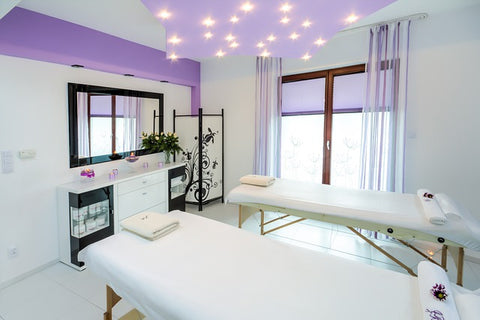As a massage therapist, setting the price for your massage can be challenging. You don’t want to price yourself out of the market, but you also need to earn a living. How do you determine your massage price? This depends on the costs you incur and the types of massages you offer. We’ll explain everything you need to know!
Table of Contents
- Getting Started with Determining Your Massage Costs
- Some Massages Incur Higher Costs
- Unique Massages Have a Higher Price
- Check the Massage Prices of Competitors
- Set the Right Price for Your Massages
- Stay True to Your Feelings
Getting Started with Determining Your Massage Costs
To set the right price for your massage, you need to know your expenses. This includes all costs associated with being a massage therapist and providing massages. Having a clear overview of these expenses is crucial to determining a fair price for your services.
Products and Practice Setup
Your costs include the purchase of materials such as the massage table, sheets, towels, and other accessories. Don’t forget about the setup of your practice space! These are often long-term investments that should be calculated per year. Additionally, you must account for the cost of consumable products like massage oil, which should be factored into your pricing.

Business Expenses
Your costs also include business-related expenses such as taxes, business bank accounts, phone bills, insurance, and website maintenance. Don’t overlook utilities like water and electricity! If you offer mobile massage services, you also have travel expenses such as fuel and vehicle maintenance.
Non-Billable Hours
As a massage therapist, you are also an entrepreneur, meaning you spend time on tasks other than giving massages. This includes administration, networking, training, website maintenance, and marketing. The percentage of non-billable hours varies but typically falls between 20-25%. In the beginning, this can be as high as 50%. Make sure to factor this in when setting your massage price.
Other Costs
As a self-employed therapist, you should also plan for retirement savings and build a financial cushion for periods of lower income. Additionally, consider ongoing education, vacations, and sick days, as these are times when you won’t be able to work but will still have expenses. Ensure that your pricing covers these factors.

Some Massages Incur Higher Costs
It’s logical to adjust your pricing based on the type of massage you offer. For example, a herbal stamp massage requires special herbal compresses, increasing your expenses. Similarly, hot stone massages tend to be more expensive than classic relaxation massages due to the cost of purchasing and maintaining a hot stone heater and stones. Cleaning time also adds to the expense, making these treatments naturally more costly.
Unique Massages Have a Higher Price
The law of supply and demand applies here. If you offer a rare type of massage, such as polarization massage or tuina massage, you may be the only therapist in your area providing it. If there’s sufficient demand, you can charge a higher price for these specialty massages than for more common treatments. However, ensure there is market demand before setting higher prices.
Check the Massage Prices of Competitors
Massage therapy is often regionally dependent—clients usually look for a therapist in their local area rather than traveling far. Research your competitors’ pricing in your area. If your rates are higher, make sure to clearly communicate your added value. Have you taken special courses? Do you offer a unique approach? Identifying your unique selling points will help justify your pricing.
Set the Right Price for Your Massages
Now that you’ve assessed your costs, analyzed competitor pricing, and evaluated demand in your area, it’s time to set your rates. Many new massage therapists start by charging below cost—this is a mistake. You have invested in training and quality equipment, and your skills provide real benefits to clients. Don’t be afraid to charge a fair price that allows you to sustain your business.

COVID-19 Surcharge
During the pandemic, extra hygiene measures became necessary. You may have purchased hand sanitizers, disposable supplies, or even work with gloves. Cleaning and disinfecting now take more time, increasing costs. Some therapists charge a small surcharge to cover these expenses. If you choose to implement a COVID-19 surcharge, clearly communicate that it is temporary. However, if competitors in your area are not charging extra, it may be harder to justify. Either way, keep these additional costs in mind when setting your prices.
Stay True to Your Feelings
Setting prices is not just a rational decision—it should also feel right. If you feel that you are undercharging, don’t hesitate to adjust your prices. Justify any increase by explaining your expertise, training, and added value to clients. If you consistently charge rates that feel too low, you may end up feeling undervalued, which can lead to burnout. Ensure your pricing reflects not only your expenses but also your worth and satisfaction.





